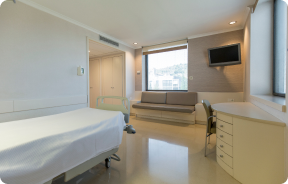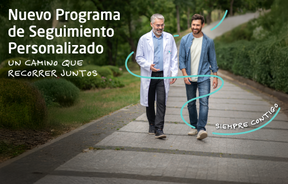

 Centro Médico Teknonen/health-centers/centro-medico-teknon
Centro Médico Teknonen/health-centers/centro-medico-teknon- Centro Médico Teknonen/health-centers/centro-medico-teknonHospital Universitari General de Catalunyaen/health-centers/hospital-universitari-general-catalunya
 Centro Médico Teknonen/health-centers/centro-medico-teknonHospital Universitari Sagrat Coren/health-centers/hospital-universitari-sagrat-cor
Centro Médico Teknonen/health-centers/centro-medico-teknonHospital Universitari Sagrat Coren/health-centers/hospital-universitari-sagrat-cor
Osgood-Schlatter disease is a condition that affects children and adolescents, especially those who are physically active.
Epidemiology:
Osgood-Schlatter disease is one of the most common causes of knee pain in children and adolescents. It usually manifests itself during the period of rapid growth, generally between 8 and 15 years of age. It most commonly affects young people who participate in sports that involve running, jumping, and changes of direction, such as football, basketball, and track and field.
Causes:
Osgood-Schlatter disease is caused by excessive tension on the tendon that connects the kneecap (patella) to the tibia, which is the shin bone. This repetitive stress causes inflammation at the tendon attachment point at the top of the tibia. Causes and risk factors include:
- Sports or intense physical activities.
- Rapid growth during adolescence.
- Genetic factors.
- Tendon overload due to repetitive movements.
Diagnosis:
The diagnosis of Osgood-Schlatter disease is based on clinical evaluation, symptoms, and the patient's medical history. The doctor may do the following:
- Perform a physical exam to evaluate pain, swelling, and tenderness just below the kneecap.
- Ask questions about the patient's physical activity and medical history.
- In some cases, x-rays may be done to rule out other conditions and to visualize changes in the tibia bone at the site of inflammation.
Treatment:
Treatment of Osgood-Schlatter disease is generally conservative and focuses on relieving symptoms and allowing the child or adolescent to safely continue physical activities. Treatment options include:
- Rest: Rest and avoiding activities that aggravate symptoms is essential. This may involve modifying sports activities for a time.
- Applying ice: Applying ice to the affected area can help reduce inflammation and relieve pain.
- Anti-inflammatory medications: In some cases, nonsteroidal anti-inflammatory drugs (NSAIDs) may be prescribed to control inflammation and pain.
- Physical therapy: Strengthening and stretching exercises can be helpful in improving the strength and flexibility of surrounding muscles.
- Wearing a knee brace: In more severe cases, wearing a knee brace may be recommended to relieve stress on the tendon.
In most cases, the symptoms of Osgood-Schlatter disease improve over time as the child or adolescent grows older. However, in some cases, mild symptoms may persist. The condition rarely requires surgery. The key is to follow your doctor's recommendations and avoid returning to physical activity too soon to allow for proper recovery.



































